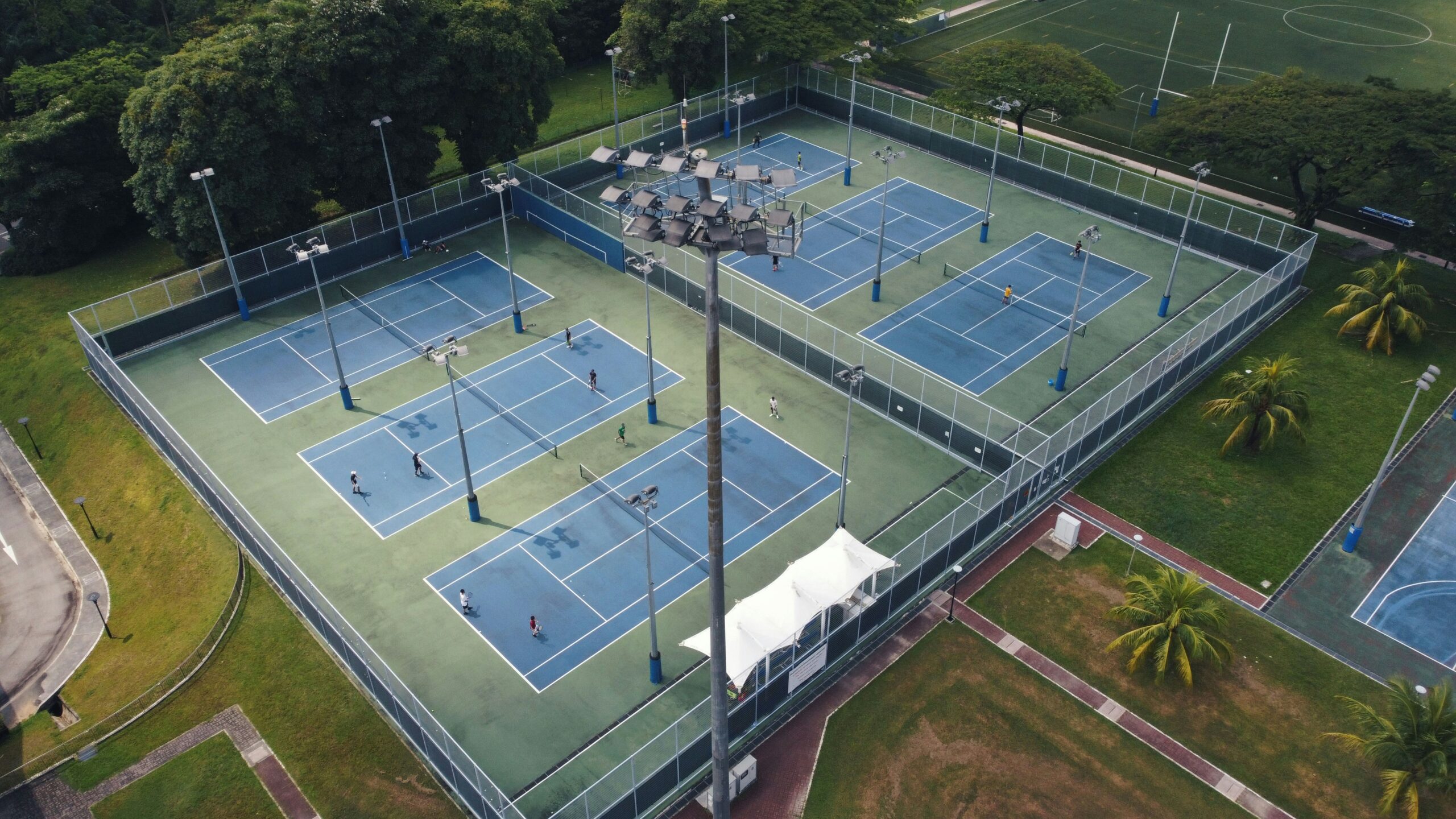Are you a parent wondering about the perfect amount of time your child should spend on the tennis court? Determining the ideal tennis court time for your child can be a challenge, but fear not – we’re here to help! In this article, we’ll explore different factors to consider when determining the right amount of time for your little tennis enthusiast to spend on the court. From their age and skill level to their ambitions and personal preferences, we’ll guide you through the decision-making process, ensuring your child gets the most out of their tennis experience. So, let’s dive into the world of tennis court time and find the perfect balance for your budding tennis star!
Assess your child’s skill level and goals
Evaluate your child’s current tennis skills
Before determining the ideal tennis court time for your child, it is important to evaluate their current tennis skills. Observe them during practice sessions and matches to assess their technique, footwork, agility, and overall level of play. This will give you a clear understanding of where they stand and what areas they need improvement in.
Consider your child’s goals in tennis
Another crucial aspect to consider is your child’s goals in tennis. Are they playing for recreation and fun, or are they aiming to compete at a higher level? Understanding their aspirations will help you tailor their tennis court time accordingly. If they have more ambitious goals, they may require additional practice hours to enhance their skills and increase their chances of success.
Consult with a tennis coach or instructor
Seek professional advice
To gain further insight into your child’s tennis abilities and how much time they should spend on the court, it is recommended to consult with a tennis coach or instructor. These professionals have the expertise and experience to assess your child’s potential and provide valuable guidance. They can offer personalized advice based on your child’s skill level, goals, and commitment to the sport.
Discuss your child’s abilities, aspirations, and commitment
During your consultation with a tennis coach or instructor, make sure to have a detailed discussion about your child’s abilities, aspirations, and commitment to tennis. Share any concerns or questions you may have and listen attentively to the coach’s advice. By engaging in open and honest communication, you can better understand what is required to help your child progress in tennis.
Consider age and physical abilities
Take into account your child’s age
When determining the ideal tennis court time for your child, it is essential to consider their age. Younger children may not have the physical stamina or attention span for extended periods on the court, while older children can handle more intensive training. Adjust the duration and intensity of their tennis sessions accordingly to ensure they can enjoy the sport and avoid overexertion.
Consider any physical limitations or strengths
Furthermore, take into account any physical limitations or strengths your child may have. If they have any pre-existing injuries or health conditions, it is important to consult with their healthcare provider and coach to determine the appropriate amount of time they should spend on the tennis court. Similarly, if your child possesses specific physical strengths, such as speed or agility, their training can be tailored to further enhance those attributes.
Factor in school and extracurricular activities
Evaluate your child’s academic workload
Besides tennis, your child likely has school commitments that demand their time and energy. It is crucial to strike a balance between academics and tennis to prevent overwhelming them. Evaluate their academic workload and consider how much time they can realistically allocate to tennis without compromising their academic performance.
Consider other commitments and hobbies
In addition to school, your child may be involved in other extracurricular activities or hobbies. Take these commitments into consideration when determining their tennis court time. It is important to foster a well-rounded childhood experience by allowing time for other interests, while also ensuring they have sufficient opportunities to develop their tennis skills.
Balance practice and rest days
Ensure regular practice sessions
Consistency is key when it comes to tennis skill development. It is essential to ensure that your child has regular practice sessions on the tennis court to improve their skills, stamina, and overall performance. Create a practice schedule that aligns with their other commitments and make sure they adhere to it consistently.
Incorporate rest days to prevent burnout
While consistent practice is important, it is equally crucial to incorporate rest days into their schedule. Rest days allow their body and mind to recover from the physical and mental demands of tennis training. Overtraining can lead to burnout and potential injuries, so striking a balance between practice and rest is essential for their long-term performance and enjoyment of the sport.
Look for signs of physical or mental fatigue
Be aware of any signs of exhaustion
Pay close attention to your child’s physical well-being during their tennis training. Look out for signs of exhaustion such as persistent fatigue, muscle soreness, or decreased performance. These may be indications that they need to decrease their time on the tennis court and allow their body to rest and recover.
Observe your child’s motivation and mental state
In addition to physical fatigue, it is important to observe your child’s motivation and mental state. If they seem disinterested, unmotivated, or mentally drained, it may be a sign that they need a break from tennis or a decrease in their court time. Open communication with your child can help you better understand their feelings and make the necessary adjustments to their training schedule.
Consider competitive schedule
Assess upcoming tournaments or matches
If your child participates in tennis tournaments or matches, their competitive schedule should be taken into account when determining their tennis court time. Prioritize practice sessions leading up to important events to ensure they are adequately prepared. However, be mindful not to overload their schedule with excessive court time, as this can lead to physical and mental fatigue.
Balance court time accordingly
Striking a balance between practice and competitive play is important for your child’s development. While practice sessions help refine their skills, competitive matches provide the opportunity to apply those skills in a real-game scenario. Adjust their tennis court time to allow for both training and competitive play, ensuring they have ample opportunities to improve and grow as a player.
Communication with your child
Discuss their enjoyment and satisfaction
Regularly communicate with your child about their enjoyment and satisfaction with tennis. Check in with them about their experience on the court, their goals, and any challenges they may be facing. Encourage them to express their thoughts and feelings openly, as this will help you gauge their level of enthusiasm and make any necessary adjustments to their tennis court time.
Encourage open dialogue about their tennis experience
It is important to create a safe and supportive environment for your child to discuss their tennis experience. Encourage them to share their successes, failures, and any concerns they may have. By fostering open dialogue, you can better understand their needs and make informed decisions about their tennis court time, ensuring their overall enjoyment of the sport.
Monitor progress and make adjustments
Regularly evaluate your child’s progress
Monitoring your child’s progress is crucial in determining the effectiveness of their tennis court time. Regularly evaluate their skill development, performance in matches, and overall improvement. This assessment can help guide you in making any necessary adjustments to their training schedule, ensuring they continue to progress at an appropriate pace.
Be flexible and make adjustments as necessary
Flexibility is key when it comes to determining the ideal tennis court time for your child. As they grow, develop, and encounter new challenges, their training needs may change. Be open to adjusting their practice schedule, intensity, and duration as necessary to meet their evolving needs. This adaptability will help ensure their continued enjoyment and success in tennis.
Seek a balance between skill development and fun
Ensure your child enjoys playing tennis
While skill development is important, it is equally important to ensure that your child genuinely enjoys playing tennis. Their passion for the sport will ultimately fuel their dedication and drive to improve. If they no longer find joy in the game, it may be a sign that their tennis court time needs to be adjusted, or they may need to explore other activities that capture their interest and enthusiasm.
Prioritize skill development along with enjoyment
While enjoyment is vital, it is crucial to prioritize skill development alongside it. Balancing both aspects will help your child progress and achieve their goals in tennis. As you determine their tennis court time, keep in mind the importance of fostering their skill development while also nurturing their love for the sport. Striking this balance will ensure a well-rounded and fulfilling tennis experience for your child.
By following these guidelines and considering various factors such as skill level, goals, age, physical abilities, commitments, and enjoyment, you can determine the ideal tennis court time for your child. Remember that every child is unique, and their needs may evolve over time. Stay attuned to their progress, listen to their feedback, and make adjustments as necessary. With the right balance of practice, rest, and enjoyment, your child can thrive on the tennis court and continue to grow as a player.


